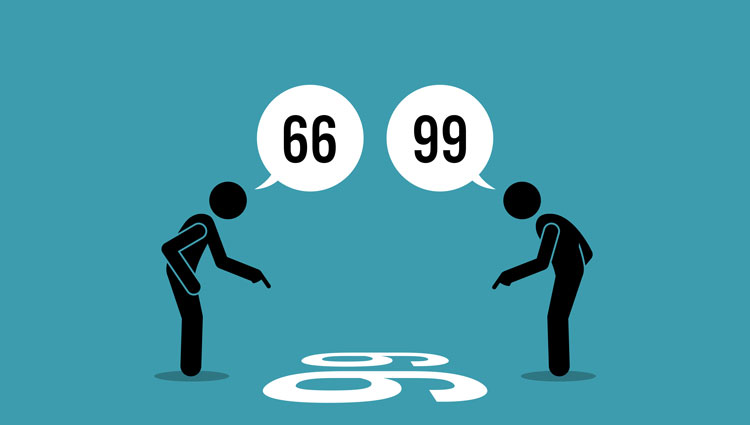As we drive down our neighborhood streets today, think about the morning routine. The people living in each of the homes on the left side of the street are just waking up, getting ready for their day. Families are starting their routines, preparing breakfast, getting kids ready for school, making lunches. Their whole day lies ahead—filled with possibilities.
Now consider the people on the right side of the street. They’re probably finishing their night shift work, preparing to wind down from their day. Some may have just finished a long evening commute, ready to relax. Others are settling in for a quiet evening at home with family, preparing for tomorrow.
The Gift of Perspective
It’s fascinating how our perspective shapes everything we see. The importance of seeing life from both sides can’t be overstated. Those morning commuters rushing to work have fresh energy and optimism for the day ahead. They see opportunities where others might see obstacles.
Meanwhile, those returning home after a full day carry different wisdom—the experience of challenges met, problems solved, and lessons learned. They’ve navigated the complexities of their day and have stories to tell.
Think about how this plays out in our daily interactions. The parent hurrying past you at the grocery store might not be rude—they might be racing to pick up a sick child from school. The neighbor who seems distant might actually be dealing with a family crisis you know nothing about. The teenager who appears disrespectful might be struggling with pressures we’ve forgotten we once faced ourselves.
Consider this: What if we approached every situation by first asking ourselves, “What does this look like from the other side of the street?” How might this simple shift in perspective change our understanding?
Practical Benefits
When we make the effort to see situations from multiple perspectives, remarkable changes occur in our relationships and decision-making. We become more empathetic listeners, better problem-solvers, and more effective communicators.
In our families, this means truly hearing what our children are saying beneath their words. When a teenager says “I’m fine” but clearly isn’t, we can look beyond the words to understand the emotions underneath. In our communities, it means understanding that the person who disagrees with us might have valid reasons we haven’t considered. In our work, it means recognizing that every challenge has multiple solutions waiting to be discovered.
Research shows that people who regularly practice perspective-taking experience less stress, have stronger relationships, and make better decisions. They’re also more likely to find creative solutions to problems because they can see situations from multiple angles.
The Ripple Effect
Here’s something beautiful about perspective-taking: it’s contagious. When we approach others with genuine curiosity about their experience rather than judgment about their behavior, they often respond in kind. A simple “That must be challenging” can transform a tense conversation into a meaningful connection.
I’ve seen this happen countless times in our community. A neighbor who seemed unfriendly turned out to be caring for an elderly parent with dementia. A family that kept to themselves was actually dealing with a job loss and felt embarrassed. Once we understood their perspective, we could offer appropriate support instead of feeling hurt by their distance.
The Daily Practice
Try this simple exercise: Tomorrow morning, when you’re having breakfast, take a moment to consider what the morning looks like for your neighbors. Are they rushing to get kids ready for school? Are they quietly enjoying a peaceful start to their day? Are they facing challenges you might not see?
This practice of perspective-taking costs nothing but offers tremendous rewards. It builds bridges instead of walls, creates understanding instead of judgment, and opens doors to connections we might never have imagined.
Start small. When someone’s behavior puzzles or frustrates you, pause and ask yourself: “What might be happening in their life that I don’t know about?” This simple question can shift you from reaction to compassion almost instantly.
Building Stronger Communities
In many community service efforts, this principle of perspective-taking comes alive. Volunteers don’t just provide a service—they offer human connection. Whether they’re delivering groceries, checking in on elderly neighbors, or mentoring students, the best volunteers take time to understand the unique circumstances of each person they serve.
Some people are eager for conversation; others prefer brief, respectful interactions. Some are navigating recent losses; others are celebrating small victories. By taking the time to understand individual perspectives, we can offer support that’s meaningful and personal.
This thoughtful, tailored approach builds trust and fosters genuine relationships—one person at a time.
Moving Forward Together
The beauty of our community lies not in our similarities, but in our willingness to understand and appreciate our differences. When we truly see each other—really see each other—we discover that the person across the street, despite their different schedule or circumstances, shares many of our hopes, dreams, and concerns.
As we continue building our community together, let’s remember that every perspective adds value. Every voice matters. Every story enriches our collective understanding of what it means to live well together.
We all want to feel understood, valued, and connected. We all have struggles that others can’t see and strengths that might surprise people. We all benefit when our community is a place where different perspectives are not just tolerated, but welcomed and celebrated.
This week’s challenge: Take a walk through your neighborhood and really notice the life happening around you. Wave to someone you haven’t met. Consider their story. Better yet, introduce yourself and ask how they’re doing—and really listen to the answer. You might be surprised by what you discover.
Remember: We’re all living on the same street, just from different sides. The view might be different, but we’re all part of the same neighborhood.







